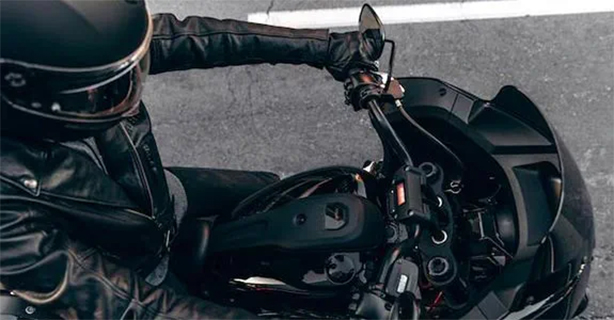CAN YOU TEST RIDE A MOTORCYCLE WITHOUT INSURANCE?
No matter what type of motorcycle you are interested in, no one wants to buy it without taking a test ride.
For most of us, a motorcycle test ride is a necessity. While it might be hard to get a feel for a brand-new motorcycle or even an old used dirt bike on a short run, you can at least see how it fits you and if it might suit your needs.
Still, motorcycle insurance policies are often a secondary concern to a potential buyer.
Unfortunately for buyers and sellers, the insurance logistics are very complicated if there is an unforeseen motorcycle incident.
CAN I TEST RIDE A MOTORCYCLE WITHOUT A LICENSE?
The short answer is no. The majority of states require a class M license to operate a motorcycle legally. This includes test rides.
For those few states without this legal requirement, it would be extremely unlikely that a dealer would allow an inexperienced rider to put their bike at risk.
The long answer is that it depends on the laws and regulations of the location where you are considering taking a test ride.
In some places, it is legal to test ride a motorcycle without a license as long as a licensed rider or instructor accompanies you. In other places, it is illegal to operate a motorcycle without a valid license, regardless of the circumstances.
It is best to check with the local authorities or the dealership where you plan to test ride the motorcycle for specific rules and regulations.
WHAT YOU NEED TO TEST RIDE
As noted above, if they allow for test rides, you will more than likely need a valid motorcycle endorsement on your driver's license and be able to demonstrate understanding or experience with the type of bike you are trying to test ride.
It's reasonable for a dealership or a private seller to be wary as the purchaser's riding abilities are unknown. Letting someone you've never met get on your motorcycle without knowledge of their motorcycle safety habits or riding experience is a considerable risk.
If you get through the hurdles to an actual test ride, it is best to come prepared to avoid any unnecessary drama.
Ensure that you have eye protection, appropriate riding gear (long pants, over-the-ankle shoes/boots, a long-sleeve shirt, or jacket), a DOT-approved helmet (if required by law in your state), and your license.
CAN I TEST RIDE A MOTORCYCLE AT THE DEALERSHIP?
From a buyer's perspective, it's unfortunate that most dealerships don't let you test drive a motorcycle like you can a car. Even if the bike you want is in your price range and sitting on the selling floor, it's improbable they will let you ride it.
To get around this, motorcycle dealerships host demo days where many dedicated test bikes are available to try. These demo bikes keep costs down and give you a feel for the bike you like, but, as always, there's a catch: you'll have to sign a waiver.
No matter how big your coverage limit is, it may not protect you in this situation. In the event of an unforeseen accident, while test-riding, the dealer will likely involve a claims adjuster to determine who was at fault. Most waivers shift the burden of cost to the rider.
Taking a bike test ride under these conditions is always a difficult decision, and it's essential that you know what you are getting into.
Personal insurance companies may defer and say that the dealership's insurance should cover the bike until it comes into your possession.
CAN I TEST DRIVE A PRIVATE / SECOND-HAND SALE?
Private sales come with their own complications, many of which involve safety for all parties involved.
Regardless of the seller's coverage, the buyer should have an active bike insurance policy in place in case of an insurance incident.
The buyer should check the bike for safety features and conditions.
From the buyer's perspective, one may want to assume the current or previous owners maintained their machine, but that's not always what happens. So be sure to inspect the bike for damage.
Unlike a dealership demo, there are strings attached to test riding a private seller's bike.
The seller may ask for a deposit or the amount of money for the bike, in cash, while you test ride in case something happens and take pictures of your driver's license.
These are standard precautionary measures.
WHAT TO LOOK FOR IF YOU CAN TEST RIDE A MOTORCYCLE
Familiarize yourself with the bike and, before every ride, check safety features with particular attention to the brakes. This is especially important for a bike you aren’t familiar with.
Is your body position adjusted to a comfortable riding position?
Are the brake pads engaging correctly?
Is the brake fluid topped up and bled?
Are your mirrors adjusted properly?
In the event of trouble, stopping will be your best option.
Again, the bike owner should be insured during the sales process as they may be responsible for damages even if you have other insurance.
BOTTOM LINE ON TEST RIDING WITHOUT INSURANCE
Because the insurance behind test riding is so tricky, it's a personal decision on whether you should take a test ride.
Whatever you choose, we have insurance specialists to talk you through any situation. Talk with one of our insurance specialists today.

